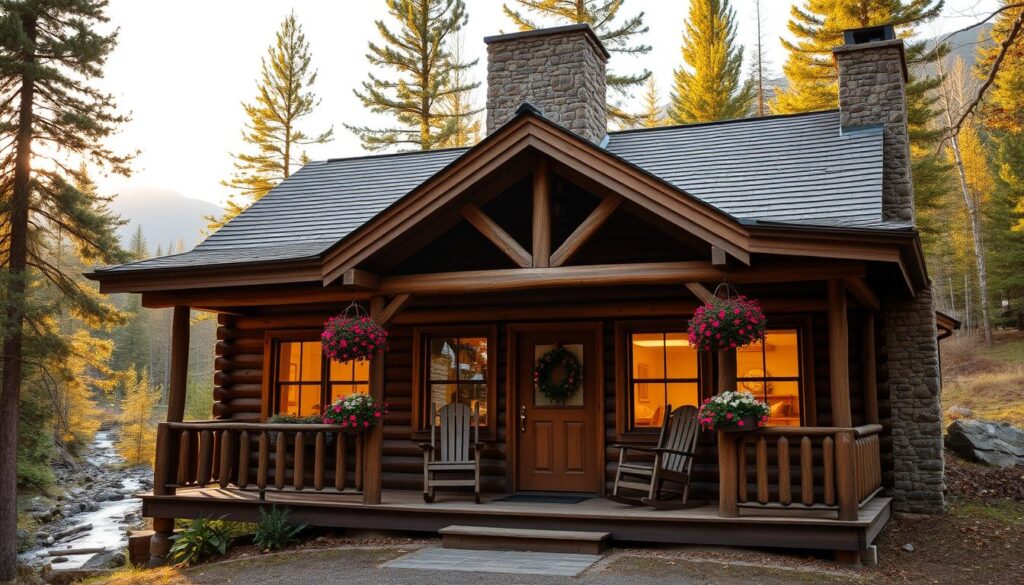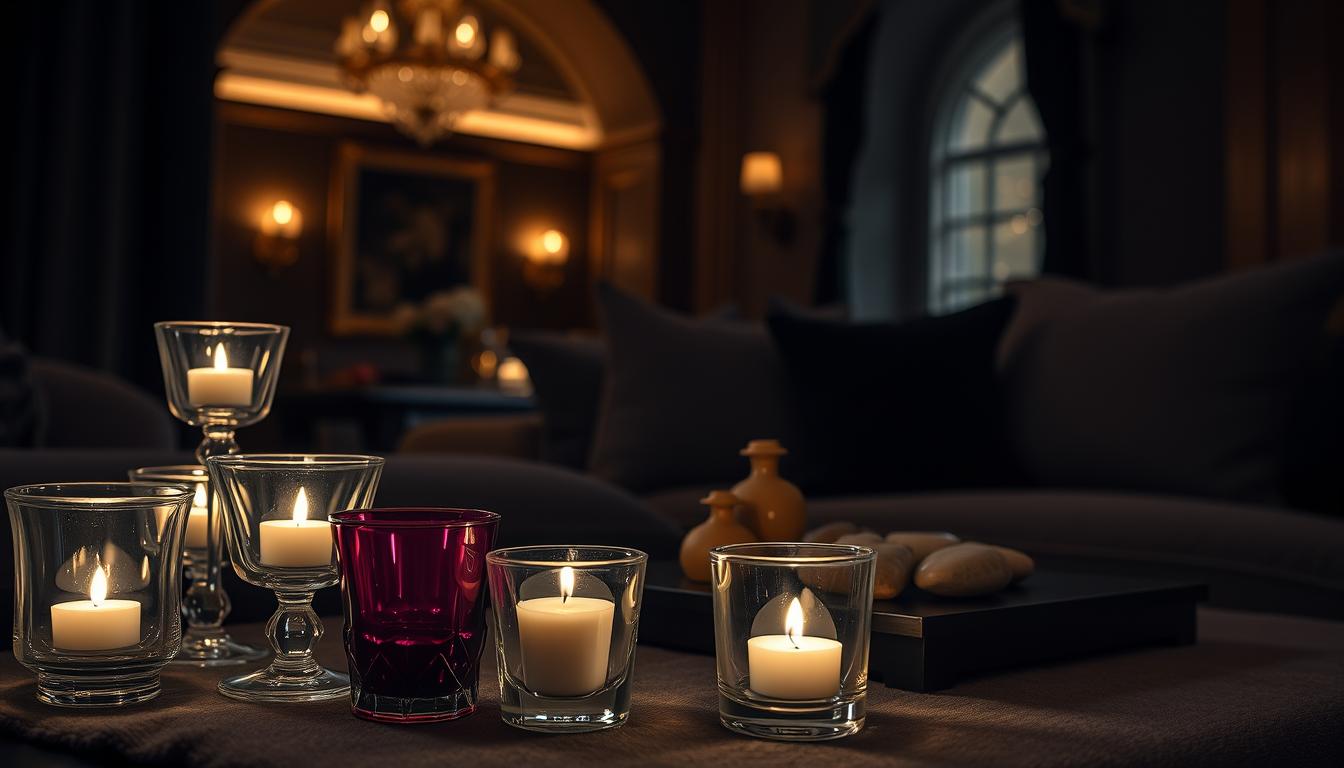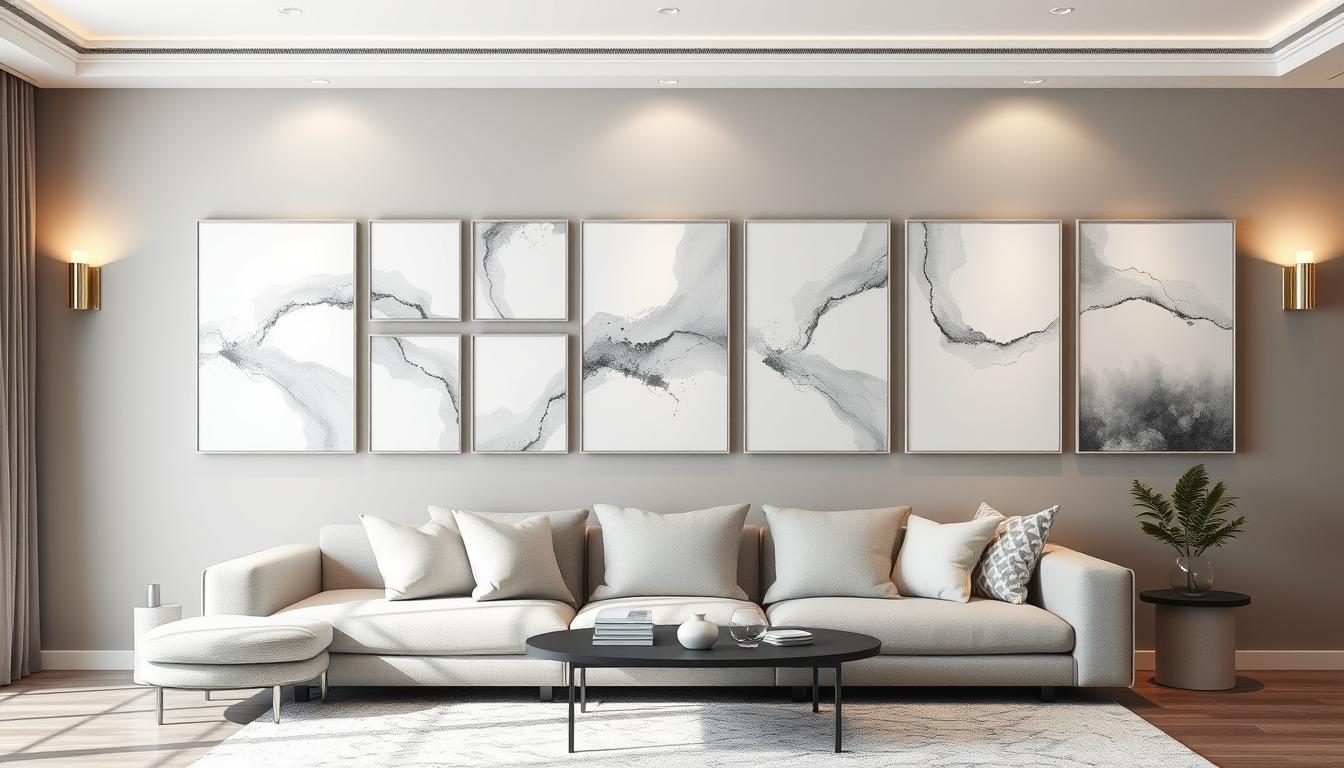Did you know that how we design our homes can really affect our mood and how well we work? With various interior design styles out there, making a harmonious and functional home is easier than ever.
We’ll look at the unique traits of each style, from old-school to the latest trends. This will help you find the perfect match for your living space. Whether you’re updating one room or redoing your whole house, knowing these styles is key. It’s the first step to making a space that shows off who you are.
Key Takeaways
- Understanding various interior design styles can help you create a harmonious space.
- Different styles can significantly impact your mood and productivity.
- Identifying the right style for your space is crucial for a successful renovation.
- Classic, modern, and other styles each have distinct characteristics.
- Renovating with a specific style in mind can enhance your living experience.
Understanding Home Interior Styles
Designing our homes means knowing about different interior styles. These styles help us create a space that shows who we are and meets our needs. It’s not just about looks; it’s about making our home functional and comfy too.
What Are Interior Home Styles?
Interior home styles are the look and feel of a home’s inside. They’re made up of furniture, colors, textures, and decorations. All these elements come together to make a unique atmosphere.
Popular styles include modern home decor, classic interior design, and contemporary home styles. Modern decor is all about simplicity and clean lines. Classic design, on the other hand, is known for its detailed and traditional feel.
Importance of Style in Home Design
The style of our home affects its feel and function. A well-designed interior can boost our mood and make the space more useful. It can even change how we live.
- A consistent style brings harmony and balance to the home.
- The right style shows off our personality and taste.
- A practical design makes the space more livable.
Key Elements of Home Styles
So, what makes a home style unique? The main parts are:
- Furniture: The furniture’s type, style, and how it’s arranged greatly affects the look.
- Color Schemes: Colors set the mood and feel of a room.
- Textures and Materials: Different textures and materials add depth and interest.
- Decorative Elements: Accessories and decorations add to the style and personality of the space.
Knowing these elements helps homeowners create a beautiful and practical space.
Classic Home Styles
Classic home styles, like Colonial and Victorian, bring history and elegance to our homes. These timeless designs have shaped how we decorate and design today.
Colonial Style Overview
The Colonial style is known for its balanced look and symmetrical front. It has a central door and windows on either side. This style is simple yet elegant, influenced by early American homes.
Key Features:
- Symmetrical facade
- Classic proportions
- Multi-pane windows
- Simple, rectangular shape
Victorian Architecture Features
Victorian homes are famous for their detailed designs, bright colors, and patterns. They are more elaborate than Colonial homes, with a whimsical and grand look.
Distinctive Elements:
- Ornate detailing
- Vibrant, multi-colored schemes
- Intricate patterns and textures
- Turreted roofs and complex silhouettes
Federal Design Characteristics
Federal design, or Adam style, is marked by balanced looks, fine details, and classical touches. It shows luxury and sophistication, inspired by ancient Greece and Rome.
Notable Features:
| Feature | Description |
|---|---|
| Balanced Proportions | Symmetrical composition |
| Refined Ornamentation | Delicate carvings and moldings |
| Classical Details | Incorporation of classical motifs |
Knowing the unique traits of these classic styles helps homeowners add their personal touch. They can mix traditional charm with modern comforts.
Modern Home Styles
The modern home style is all about clean lines and minimal ornamentation. It seamlessly integrates with the outdoors. This design aesthetic emphasizes simplicity and functionality, creating a sense of openness and flow within the home.
Defining Characteristics of Modern Style
Modern home decor uses innovative materials and bold color schemes. Clean lines and minimal ornamentation are key features. These homes often have large windows and sliding glass doors, making the indoors feel like outdoors.
Minimalism and Its Impact
Minimalism has greatly influenced modern interior design. It creates a calm and serene atmosphere by removing unnecessary elements. This design approach focuses on functionality and efficiency, making living spaces more practical.
For more insights into different home styles, explore our comprehensive guide on various interior design styles.
Popular Modern Color Schemes
Modern homes often feature bold and innovative color schemes. Neutral tones like white, gray, and beige are common. But, many designs also use bold accent colors to add visual interest.
Here’s a look at some popular modern color schemes:
| Color Scheme | Description | Best For |
|---|---|---|
| Mono-Colored | Using different shades of a single color to create a cohesive look. | Minimalist spaces |
| Neutral with Bold Accents | Pairing neutral tones with bold accent colors for contrast. | Adding visual interest |
| Earth Tones | Incorporating natural colors like green, brown, and tan to bring the outdoors in. | Connecting with nature |
Traditional Home Styles
Traditional home styles are cozy and warm. They often have rich wood tones, comfy furniture, and classic decor. This mix creates a welcoming atmosphere.
Features of Traditional Interiors
Traditional interiors use classic elements like ornate moldings and warm colors. These features make the space feel cozy and inviting.
Key Features:
- Ornate moldings and detailed woodwork
- Comfortable, plush furnishings
- Warm, inviting color schemes
The Role of Wood in Traditional Homes
Wood is key in traditional home decor. It adds depth, character, and warmth. Hardwood floors and wooden furniture are common in these homes.
The beauty of wood is its versatility and warmth. It enhances any room, whether for flooring, furniture, or decor.
Traditional Furniture and Decor
Traditional furniture and decor have classic designs with intricate details. Pieces like plush armchairs and carved wooden cabinets stand out.
Popular Traditional Furniture Pieces:
- Plush armchairs and sofas
- Intricately carved wooden cabinets
- Classic, ornate mirrors
Contemporary Home Styles
Exploring contemporary home styles opens a world where design has no limits. This style is often confused with modern, but it’s unique. It has its own special traits.
Contemporary design is all about being flexible and embracing new trends and tech. It’s not stuck in one look or time. Instead, it keeps changing and growing.
What Sets Contemporary Apart?
Contemporary homes mix different styles and times, making each space unique and lively. This mix lets homeowners show off their style through their decor.
Key characteristics include open layouts, lots of natural light, and simple colors with bold touches.
Common Materials Used
Contemporary homes use many materials, from eco-friendly woods to industrial metals. These materials are both useful and eye-catching.
- Sustainable materials like reclaimed wood and bamboo
- Industrial materials such as steel and concrete
- Glass and other clear materials to bring in more light
Blending Old and New Elements
Mixing old and new is key in contemporary design. This mix makes a space rich and full of layers. It shows off the homeowner’s story and personality.
To mix old and new, pair vintage or antique items with modern pieces. The mix of old and new adds depth and interest to your space.
By following contemporary design, homeowners can make a space that’s both stylish and meaningful.
Rustic Home Styles
Rustic home design brings warmth and character to any space. It celebrates the beauty of natural materials and elements. This creates a cozy and welcoming atmosphere.
Defining Rustic Aesthetics
Rustic aesthetics use natural materials like wood, stone, and brick. These materials are often left in their natural state. This keeps their original charm.
The color palette in rustic design is earthy. Shades of brown, green, and tan are common. This creates a warm and comfortable feel, making any space feel like home.

Use of Natural Materials
Natural materials are key in rustic home design. Wood is very popular, used in flooring and furniture. Its texture and grain add depth and character to a room.
Other natural materials like stone and brick are also used. They’re often seen in fireplaces and accent walls. These materials add visual interest and a sense of ruggedness and authenticity.
Rustic Decor Essentials
To complete the rustic look, certain decor essentials are key. Vintage or antique pieces add history and charm. Natural textiles like wool and linen enhance the cozy atmosphere.
Here are some common rustic decor elements:
- Reclaimed wood furniture
- Stone or brick accent walls
- Vintage or antique decor
- Natural textiles and fibers
- Earth-toned color palette
| Rustic Decor Element | Description | Example |
|---|---|---|
| Reclaimed Wood | Wood salvaged from old buildings, used for furniture or flooring. | Reclaimed wood coffee table |
| Stone Accent Walls | Using stone to create a focal point in a room. | Stone fireplace surround |
| Vintage Decor | Antique or vintage items that add character. | Old vintage posters |
Industrial Home Styles
Industrial home styles are all about embracing the raw and unfinished. They feature exposed brick, metal beams, and reclaimed wood. This style is great for those who love the beauty of the unpolished and the urban look.
Characteristics of Industrial Design
Industrial design celebrates the raw and unrefined. It includes:
- Exposed brick and concrete
- Metal beams and ductwork
- Reclaimed wood and industrial materials
- Open floor plans and high ceilings
Exposed brick and concrete give a rugged, unfinished look. Metal beams and ductwork enhance the industrial vibe. Reclaimed wood adds warmth.
Best Colors for Industrial Spaces
The color palette for industrial spaces is mostly neutral. It focuses on:
- Neutrals like gray, black, and white
- Earth tones to warm up the space
- Bold accents to add personality
| Color | Description | Effect |
|---|---|---|
| Gray | Neutral background | Provides a clean canvas |
| Black | Accent color | Adds depth and contrast |
| Earth Tones | Warmth and coziness | Balances the industrial feel |
Incorporating Vintage Elements
Adding vintage elements can make your industrial-style home unique. Think about:
- Repurposing old furniture
- Using vintage decor items
- Incorporating antique pieces
By mixing industrial and vintage elements, you can create a space that’s both eclectic and personal.
Mediterranean Home Styles
The Mediterranean style blends indoor and outdoor spaces, making homes warm and inviting. It draws inspiration from Spain, Italy, and Greece. This style is known for its ability to merge living areas seamlessly.
Overview of Mediterranean Influence
Mediterranean homes use natural materials like stucco, terracotta, and wood. These materials add durability and warm, earthy tones. Outdoor living areas are a big part of this style, with large courtyards and terraces.
Interior design experts say, “Mediterranean homes blur the lines between indoors and outdoors.”
This design philosophy is seen in large windows, outdoor kitchens, and shaded living areas.
Key Architectural Features
Mediterranean homes have distinct features:
- Arched doorways and windows
- Terracotta or ceramic tile roofing
- Stucco or stone exterior walls
- Ornate ironwork details
- Expansive outdoor living areas
These features enhance the home’s look and serve practical purposes. They provide shade and protect from the weather.
Color Palettes and Textures
Mediterranean design favors warm, earthy colors like terracotta, sienna, and golden brown. These are paired with cool blues and whites, evoking the Mediterranean Sea.
| Color | Texture | Common Use |
|---|---|---|
| Terracotta | Rough, earthy | Pottery, flooring |
| Sienna | Smooth, matte | Walls, decorative elements |
| Golden Brown | Wood grain | Furniture, trim |
Mediterranean design combines rough and smooth textures. This mix includes stucco walls with terracotta tiles.
By using these elements, homeowners can create a beautiful and functional Mediterranean-inspired space.
Craftsman Home Styles
The Craftsman style is a key part of early 20th-century architecture. It’s still shaping home design today. This style focuses on handcrafted details, quality materials, and the artisan’s skill. It makes homes warm and inviting.

Understanding the Craftsman Movement
The Craftsman movement was a reaction against the Industrial Revolution’s mass-produced goods. It valued handmade craftsmanship and the human touch. This is seen in Craftsman homes, where every detail shows quality and skill.
Craftsman homes are cozy and welcoming. They have exposed beams, hardwood floors, and large fireplaces. These features add beauty and warmth, making the homes feel like a haven.
Signature Design Elements
Craftsman homes stand out with low-pitched gabled roofs, wide eaves, and decorative trusses. The exterior uses wood, stone, and brick for depth and interest. Inside, natural materials like wood are favored, with a focus on built-in shelving and cabinetry.
Handcrafted details, like hand-carved woodwork and art glass windows, are key. They show the craftsmanship of the time and add elegance to the home.
“The whole tendency of modern life is towards the simplification and standardization of the home, and the Craftsman ideal is in direct opposition to this tendency.” – Gustav Stickley
Furniture Styles in Craftsman Homes
Furniture in Craftsman homes is sturdy, simple, and natural. It has clean lines and minimal ornamentation. The focus is on functionality and comfort, with beauty in mind.
Mission-style furniture is popular. It’s known for its straightforward design and handcrafted joinery. Pieces are often made from solid woods like oak and maple, adding to the natural feel.
Eclectic Home Styles
Eclectic homes show the power of self-expression. They mix different things into a beautiful whole. This way, homeowners can show off their unique style, making their home truly special.
The Appeal of Eclecticism
Eclecticism is appealing because it combines various design styles. This creates a space that’s both interesting and personal. It lets homeowners explore different styles without following traditional rules.
This design isn’t just about mixing things. It’s about telling a story through your home. It could be a vintage chair with a modern sofa or art from different places. Eclectic design loves the beauty of diversity.
Mixing Different Design Influences
Mixing styles is key in eclectic design. Start by figuring out what you like. This could be a favorite color, texture, or design era. Then, mix in elements from other styles to create something unique.
For example, you might mix modern lines with traditional wood furniture. Or, you could blend bohemian patterns with minimalist decor. The goal is to find a balance that feels right to you.
Tips for Creating an Eclectic Space
Creating an eclectic space needs careful planning. Here are some tips to help:
- Start with a Neutral Base: Use a neutral color palette as a calm background for your eclectic decor.
- Mix and Match with Purpose: Make sure each item has a reason to be there and adds to the overall look.
- Balance Bold Elements: If you have bold pieces, balance them with simpler items to avoid too much.
- Edit and Curate: Keep your space tidy by regularly choosing and arranging your items thoughtfully.
By embracing eclecticism and using these tips, you can make a home that’s both beautiful and truly yours.
Transitional Home Styles
Transitional home styles mix traditional and modern elements. This creates a balanced and harmonious living space. It’s perfect for those who want to blend classic decor with modern design.
Blending Traditional and Modern Elements
To achieve a transitional look, balance traditional and modern elements. Combine classic furniture with modern materials and finishes. For example, pair a wooden armchair with a glass and metal coffee table.
Here are some tips to blend these elements well:
- Mix old and new furniture for a unique look.
- Use a neutral color palette as a backdrop.
- Add different textures like wood, metal, and fabric for depth.
Color Schemes for Transitional Interiors
Transitional interiors often use a neutral color palette. This palette includes warm and cool tones. It creates a soothing atmosphere that’s calming and inviting.
A typical transitional color scheme includes:
| Color | Description | Example |
|---|---|---|
| Neutral Beige | A calming base color | Benjamin Moore’s Simply White |
| Soft Gray | A versatile accent color | Sherwin-Williams’ Comfort Gray |
| Warm Wood Tones | Adds coziness and depth | Oak or Walnut wood furniture |
Furniture Choices for Transitional Spaces
Furniture in transitional spaces should be both functional and stylish. Look for pieces with clean lines, simple silhouettes, and a mix of materials.
Some popular furniture choices include:
- Upholstered furniture with classic design and modern fabric.
- Wooden furniture with a distressed or reclaimed finish.
- Metallic accents like brass or silver for sophistication.
By blending traditional and modern, choosing a balanced color scheme, and picking the right furniture, we can create a beautiful and functional transitional home.
Selecting the Right Style for Your Home
Choosing the perfect interior style for your home can be tough. There are so many different designs out there. It’s important to think about what you like and how you live.
Assessing Personal Taste
Start by figuring out what you like. Think about colors, textures, and furniture that appeal to you. Consider the mood you want in your home and how you want to feel there.
Incorporating Personal Touches
Adding personal touches makes your space unique. You can use special decorative items, family treasures, or art that shows who you are. Make sure these elements work well together for a unified look.
Making the Final Decision
When picking a style, think about your home’s architecture and your lifestyle. Whether you choose a simple or elaborate design, aim for a space that feels real and cozy. This way, your home will show your personality and meet your needs.



